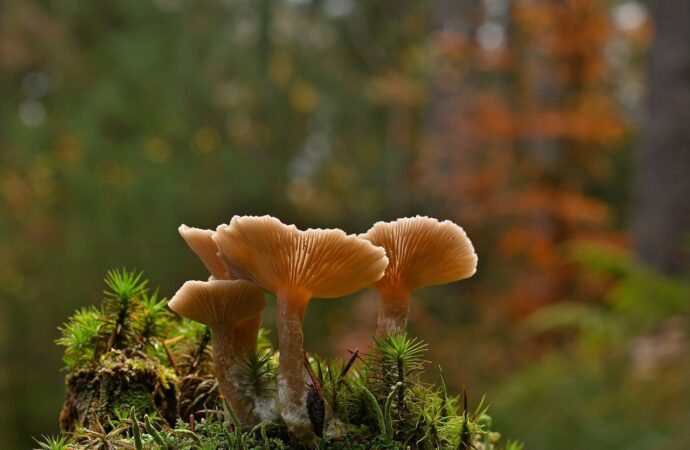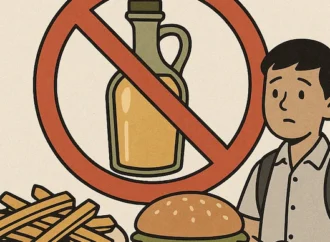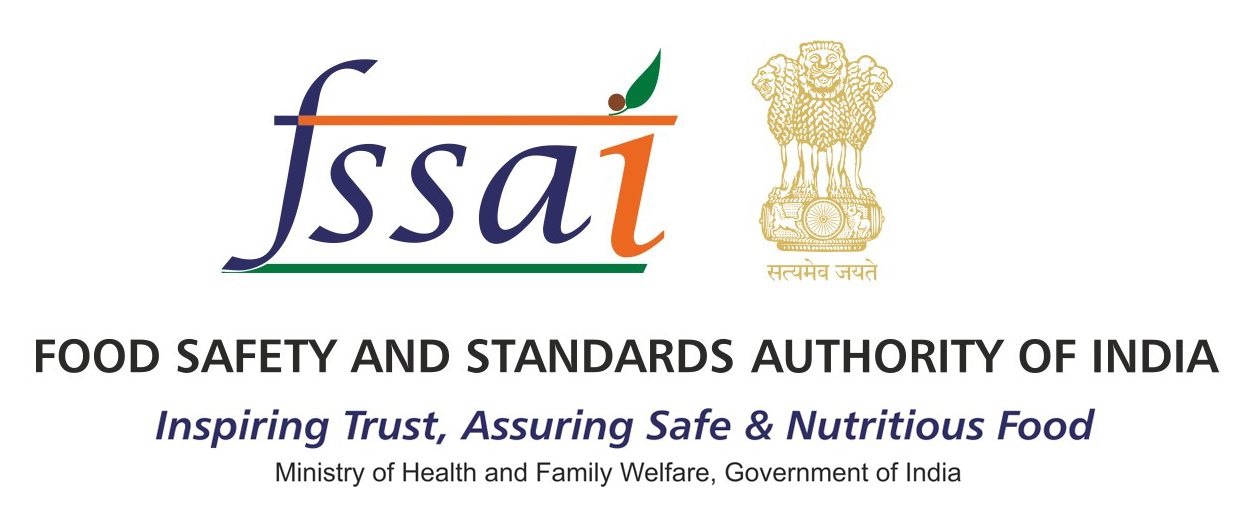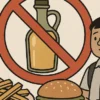Author: Dr. Sunitha Poulose
INTRODUCTION
Though a favoured food, mushrooms may contain a variety of harmful substances that are extremely dangerous to health. Toxic mushroom consumption can result in serious, occasionally fatal poisoning. Understanding the types of toxins present in mushrooms, their mechanisms of action, and the symptoms they produce is crucial for both public health and clinical management. Different substances responsible for the fatal signs and symptoms of mushroom toxicity have been identified from various poisonous mushrooms. In addition, toxicity may be caused not only by the original biological composition of the fruiting body but also by more conventional types of food poisoning, such as incorrect preservation or processing of mushrooms after harvesting. This article observes the identification of poisonous mushrooms, the nature of their toxins, and essential guidelines for safe foraging.
IDENTIFYING AND UNDERSTANDING POISONOUS MUSHROOMS
Around the world, ecosystems support a large variety of mushroom species, they are an interesting and diverse collection of fungi. Certain types of mushrooms are recognized to be harmful. The majority of these accidents are caused by inaccurate species identification, which is frequently done using traditional and empirical information. Numerous poisonous mushroom species come from various genus; a few will be covered below.
- Amanita Species
The family Amanitaceae (genus Amanita) is well known as having many toxic species. Amatoxins are present in species of the Amanita genus such as Amanita phalloides (Fig:1), and Amanita virosa(fig:2).
 Fig: 1 Amanita phalloides (death ca)
Fig: 1 Amanita phalloides (death ca)
 Fig: 2Amanita virosa (toxic poisonous)
Fig: 2Amanita virosa (toxic poisonous)
- Characteristics: Often have a bulbous base, a ring on the stem, and a cap that can range in colour from white to bright red.
- Toxins: Amatoxins, phallotoxins.
- Galerina Species
Galerina contains deadly amatoxins at concentrations equaling those in the death cap, Amanita phalloides. Although individual Galerina mushrooms are small, the amatoxins can have dramatic consequences if ingested. A toxic poisonous notable Species is Galerina marginata (Fig:3).
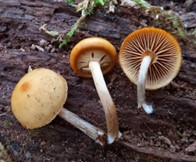
Fig3: Galerina marginata.
- Characteristics: Small, brown mushrooms typically found on wood.
- Toxins: Amatoxins.
- Cortinarius Species
Cortinarius is one of the largest genera of mushrooms and is represented by more than 2000 ECM species all over the world. Firstly, their gills are covered with cortina when young; the tiny fibres of the cortina also form a ring zone on the stem. Secondly, the mature gills of Cortinarius mushrooms are usually rusty brown due to the presence of rusty brown spores Eg: Cortinarius orellanus (Fig: 4).
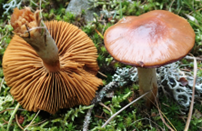
Fig4: Cortinarius orellanus
- Characteristics: Rusty-brown spores, cobweb-like veil.
- Toxins: Orellanine.
- Gyromitra Species
Gyromitrin is a toxin found in several Gyromitra species. Often called fake morels, Gyromitra esculenta (Fig:5) is sometimes mistaken for morels like Morchella elata. False morels can be consumed, but boiling them also releases vapours that can get one intoxicated.
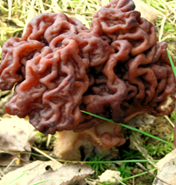
Fig5: Gyromitra esculenta
- Characteristics: Brain-like or convoluted caps
- Toxins: Gyromitrin
- Inocybe and Clitocybe Species
Inocybe (Inocybe geophylla) (Fig:6 ) is a large genus of mushrooms and contains toxic substances including muscarine, psilocybin, psilocin, aeruginascin, lectins and baeocystin. As for morphological characteristics, the fruiting bodies are small. The cap is deep cinnamon-brown to rust-brown oblate with hairy scales, up to 4 cm in diameter and has a margin without cracks. Mushroom meat is white and its fold is straight to nearly extended, light rust colour, and with a white fold margin. The mushroom has a cylindrical almost white stipe. Clitocybe ( Clitocybe dealbata) (Fig:7 ) a poisonous mushroom due to the presence of muscarine in their chemical composition.
 Fig 6: Inocybe geophylla
Fig 6: Inocybe geophylla
 Fig 7: Clitocybe dealbata
Fig 7: Clitocybe dealbata
- Characteristics: Typically small, brown or white mushrooms.
- Toxins: Muscarine
- Psilocybe Species
It is commonly called as liberty cap. The fruiting body has distinct conical to bell-shaped cap of fruiting body with a small nipple-like protrusion on the top. The fruiting body may be yellow to brown and covered with radial grooves. The stipe is slender and long. The spores are dark purplish-brown with ellipsoid shape. The margin of cap is initially rolled inward but unrolls to become straight or even curled upwards at maturity. In moist condition the cap is pale brown to dark brown or with a greenish-blue tinge. The dry cap shows pale to light yellow-brown colour. The underside of the cap possess narrow gills The spores produced are deep reddish purple to brown in colour The stalk of fruiting body is slender and yellowish to brown ( Eg.Psilocybe cubensis) (Fig: 8).

Fig8: Psilocybe cubensis
- Characteristics: Small, brown or tan mushrooms
- Toxins: Psilocybin, psilocin.
- Coprinus Species
It is known as the shaggy mane or shaggy ink cap lawyer’s wig or shaggy mane. It is found in lawn waste areas. The fruiting body turns black and dissolves itself after being picked. The fruiting body remains shaggy and with cylindrical ink cap. The cap of the fruiting body is white and covered with scales. The gills beneath the cap are white to pink or black. It secretes a black liquid containing a mass of spores Eg: Coprinus atramentarius (inky cap) (Fig: 9).

Fig9: Coprinus atramentarius
- Characteristics: Often have an ink cap that dissolves into a black liquid.
- Toxins: Coprine.
Mushroom foraging can be a rewarding activity, but it comes with significant risks due to the presence of poisonous species. Accurate identification and a thorough understanding of toxic mushrooms are essential for safe foraging. By using reliable resources, consulting experts, and practising caution, one can enjoy the benefits of mushroom foraging while minimizing the dangers associated with poisonous varieties.
POISONOUS SUBSTANCES IN MUSHROOMS
Mushrooms, a diverse group of fungi, many mushrooms contain toxic compounds that can pose serious health risks. These poisonous substances, ranging from simple organic molecules to complex peptides, can cause a wide spectrum of symptoms, from mild gastrointestinal distress to severe organ failure and death. Understanding the nature of these toxins, their sources and their effects is crucial for both preventing accidental poisonings and managing them effectively when they occur. This article explores the primary poisonous substances found in mushrooms, providing a foundation for recognizing and understanding mushroom toxicity.
TYPES OF MUSHROOM TOXINS
Mushroom toxins are chemically diverse, each type of toxin has a unique mechanism of action and can cause a wide array of symptoms, from mild gastrointestinal discomfort to severe neurological damage and even death. Understanding the different types of mushroom toxins, their sources, and their effects is crucial for both preventing mushroom poisoning and effectively managing it when it occurs.
This overview will delve into the primary categories of mushroom toxins, providing insights into their characteristics and impacts on human health. Mushroom toxins have been divided into seven main categories: amatoxins & Phallotoxins (cyclopeptides), orellanus (Cortinarius species), gyromitrin (mono methylhydrazine), muscarine, ibotenic acid, psilocybin, and coprine.
1A. Amatoxins

- Chemical Structure and Source: Amatoxins, primarily found in the Amanita species (e.g., Amanita phalloides, commonly known as the death cap), are cyclic peptides.
- Mechanism of Action: These toxins inhibit RNA polymerase II, an enzyme critical for DNA transcription, leading to cell death.
- Symptoms: Symptoms typically appear 6-12 hours post-ingestion and include severe abdominal pain, vomiting, diarrhoea, leading to liver and kidney failure.
1B. Phallotoxins
- Chemical Structure and Source: Also found in Amanita species, phallotoxins are heptapeptides.
- Mechanism of Action: They bind to actin filaments in cells, disrupting cellular function. However, they are less toxic than amatoxins as they are not absorbed efficiently in the human gut.
- Symptoms: Gastrointestinal distress similar to amatoxins but less severe.
- Orellanine

- Chemical Structure and Source: Found in Cortinarius species, orellanine is a bipyridine compound.
- Mechanism of Action: Orellanine causes oxidative stress in kidney cells, leading to renal failure.
- Symptoms: Delayed symptoms (2-20 days) including thirst, frequent urination, nausea, and kidney failure.
- Gyromitrins

- Chemical Structure and Source: Found in Gyromitra species, these toxins hydrolyze to form monomethylhydrazine (MMH), a volatile hydrazine derivative.
- Mechanism of Action: MMH inhibits the enzyme GABA transaminase, disrupting the central nervous system.
- Symptoms: Delayed onset of nausea, vomiting, dizziness, and in severe cases, seizures and coma.
- Muscarine

- Chemical Structure and Source: Found in several species including Inocybe and Clitocybe, muscarine is a quaternary ammonium compound.
- Mechanism of Action: It mimics the neurotransmitter acetylcholine, overstimulating the parasympathetic nervous system.
- Symptoms: Rapid onset of salivation, sweating, lacrimation, and abdominal cramps. Severe cases can lead to respiratory failure.
- Ibotenic Acid and Muscimol


- Chemical Structure & Source: Found in Amanita muscaria species, Ibotenic acid is a neurotoxic amino acid; muscimol is its psychoactive decarboxylation product.
- Mechanism of Action: Ibotenic acid acts as a glutamate receptor agonist; muscimol is a GABA_A receptor agonist.
- Symptoms: Symptoms include confusion, hallucinations, muscle jerks, and sleepiness, occurring 30 minutes to 2 hours post-ingestion
- Psilocybin

- Chemical Structure and Source: Found in Psilocybe species, psilocybin is a tryptamine compound.
- Mechanism of Action: Psilocybin is metabolized to psilocin, which affects serotonin receptors in the brain.
- Symptoms: Hallucinogenic effects, altered perception, and euphoria. Overdose can lead to severe anxiety and paranoia.
- .
- Coprine

- Chemical Structure & Sources: Found in Coprinus atramentarius (inky cap), Cyclopropylglutamine derivative.
- Mechanism of Action: Inhibits acetaldehyde dehydrogenase, causing acetaldehyde accumulation when alcohol is consumed.
- Symptoms: Symptoms include flushing, nausea, vomiting, headache, and palpitations, resembling a disulfiram reaction if alcohol is consumed within 72 hours of ingestion.
Classification of Clinical Types of Mushroom Poisoning
Mushroom poisoning, also known as mycetism, results from the ingestion of toxic substances present in certain mushroom species. The clinical presentation of mushroom poisoning can vary widely, depending on the type of toxin involved. Understanding the classification of mushroom poisoning based on clinical symptoms and toxin types is essential for effective diagnosis and treatment as demonstrated in Table 1.
| Clinical type of mushroom poisoning | Suspected toxin | Mushroom species |
| Cytotoxic mushroom poisoning | Amatoxins | Amanita phalloides |
| Orellanine | Cortinarius spp. | |
| Neurotoxic mushroom poisoning | Psilocybins | Psilocybe spp. |
| Muscarines | Inocybe spp. | |
| Ibotenic acid/muscimol | Amanita muscaria | |
| Myotoxic mushroom poisoning | Carboxylic acid | Russula subnigrans |
| Saponaceolide B | Tricholoma equestre | |
| Metabolic/endocrine toxicity mushroom poisoning | Gyromitrins | Gyromitra spp. |
| Coprines | Coprinus spp. | |
| Gastrointestinal irritant mushroom poisoning. | Various irritants and undetermined toxins | Agaricus, Boletus, Chlorophyllum, and Entoloma |
Table 1: Classification of clinical types of mushroom poisoning
CONCLUSION
There are a large number of mushroom poisoning cases reported every year in areas with high mushroom consumption. Insufficient knowledge and misidentification of species are the leading causes of mushroom intoxication. Some species contain hazardous toxins in varying proportions that cause diverse signs and syndromes. Not only toxic mushrooms but also some edible mushrooms contain poisonous compounds and the severity of intoxication is dependent on the amount consumed. Accidental ingestion of mushrooms is difficult to avoid when there is a lack of knowledge and awareness about mushroom poisoning.
 Food Manifest
Food Manifest 